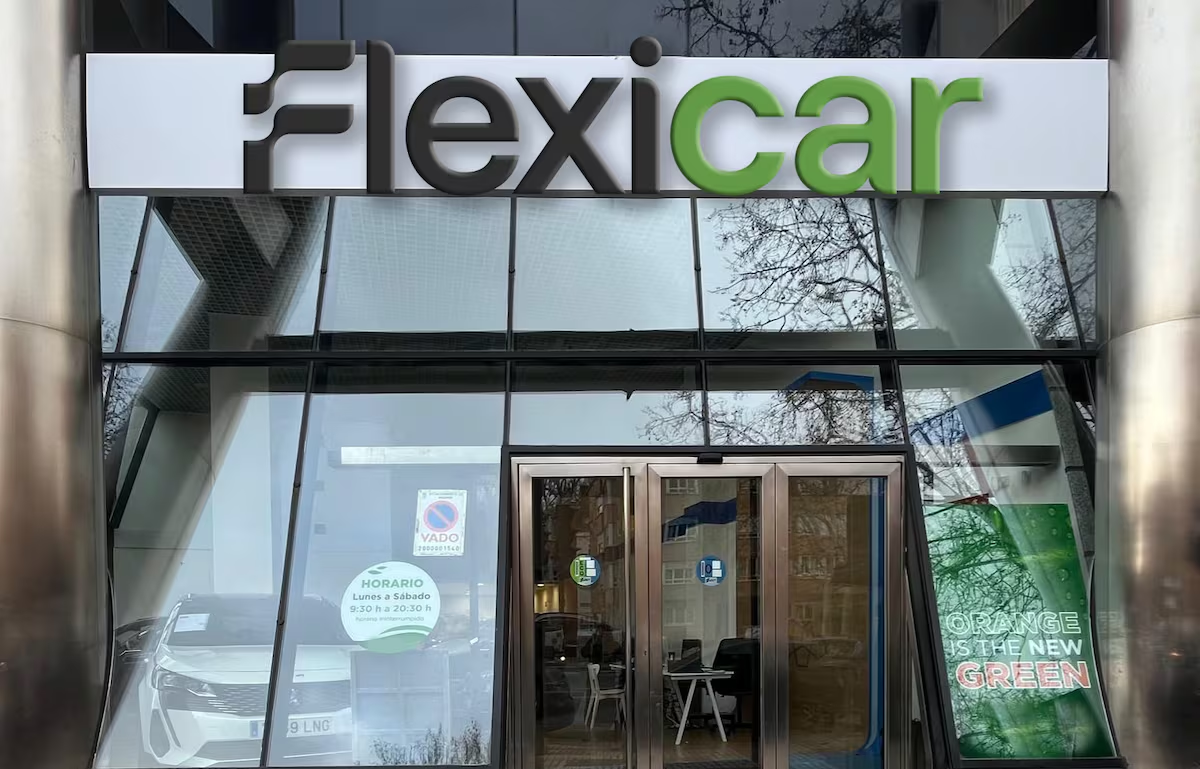
Electric and zero-emission mobility in Spain is growing at a rate of 35% per year, as revealed by the report from the Spanish Association of Car and Truck Manufacturers (ANFAC) with data to 2024. At the end of the year, 494,967 alternative vehicles (electric, hybrid and gas) were registered, representing 1.6% of the total vehicle fleet (over 31 million). However, the objective of the Government’s National Integrated Energy and Climate Plan (PNIEC) is to reach 5.5 million electricity supplies by 2030.
Leo Ongua, director of Equipment Development, Profitability and Quality at Flexicar, believes this is feasible, although he believes that other driving measures are needed to achieve the goal: “Reduce prices, encourage purchases, improve vehicle autonomy and expand the charging infrastructure network,” he adds.
Flexicar, the used vehicle company where Ongua works, has its own plan to contribute to the electrification of mobility in Spain. A year and a half ago they created Flexicar Green. “Our mission is to provide citizens with access to electric and hybrid vehicles through the used market, with more affordable prices,” explains Ongua, who led the implementation of Flexicar Green.
Flexicar Green, in numbers
2 shops from Flexicar Green in Madrid and Barcelona
Him 80% of the shares They are vehicles Zero and ecological label
From March 2024 * they were sold 722 units482 in Madrid, 240 in Barcelona
*Data as of September 2025
The market for vehicles with these characteristics is very large, explains José Joaquín Pérez, salesman at the Flexicar Green dealership, in Alcalá 474 street in Madrid. Depending on the type of engine and its energy generation, “there are 100% electric, hybrid, microhybrid and plug-in hybrid models”, lists Pérez. They all have the Zero or Eco label which guarantees a type of mobility without restrictions thanks to their low or zero CO2 emissions into the atmosphere.
What you should know about environmental vehicle regulations
B
Diesel engine after 2006 or petrol engine after 2001 *

C
Diesel after 2015 or petrol after 2006

ECO
Eco Plug-in hybrids with a range of less than 40 km and powered by compressed natural gas (CNG), liquefied natural gas (LNG) or liquefied petroleum gas (LPG)

Zero Electrical Emissions
Plug-in hybrids with 40km range or fuel cell vehicles

Low Emission Zones (ZBE)
These are urban areas that restrict access and limit parking to the most polluting vehicles.
From 2023municipalities with more than 50,000 inhabitants They must have their own ZBE.
The accesses to The ZBEs depend on each municipality:
- In Madridthe most restrictive case at this time, labels B and C are only accessible if they park in a public car park, if they have their own garage or if it is for the collection of people with reduced mobility.
- In Barcelonarestrictions on B vehicles will begin in 2026.
- From 2030Only vehicles with the ZERO and Eco labels can circulate in ZBEs throughout Spain.
* Diesel before 2006 and petrol before 2001 have no label. The total restriction of its circulation in cities such as Madrid has already begun.
Sources: General Directorate of Traffic, Municipality of Madrid, Municipality of Barcelona
Criteria for choosing an electric or hybrid vehicle
The choice of one model or another depends on the customer’s needs. “For daily use and long journeys, we recommend hybrid cars, with the Eco label, which run on a combustion engine, but also have a battery that self-regenerates by braking and do not depend on a charger,” explains Pérez. “The electric performance is not the same as a plug-in hybrid, but it reduces emissions and saves energy, which translates into lower refueling costs,” adds seller Flexicar Green. Although in smaller numbers, the rest of the Flexicar dealers also have this type of vehicle in stock.
A plug-in hybrid – which can be connected to the grid to recharge the battery – has a certain electric range, increasing the savings Pérez talks about. «However, if the daily journeys are short and urban, i.e. mainly in the city, the advice is a vehicle with a 100% electric engine», he underlines.

“Electric and hybrid vehicles have become cheaper, they are no longer just for the rich”
In addition to contributing to the reduction of emissions, these types of vehicles help us save money “thanks to their lower energy consumption”, recalls Pérez. “Charging an electric vehicle is cheaper and above all it is more efficient while driving. For example, at traffic lights or in a traffic jam, the engine stops and stops consuming,” the ad claims.
Democratize access to electrified private mobility
Thanks to technological innovation, the development of new models, competition between brands and the emergence of companies such as Flexicar, which promote the use of second-hand vehicles, access to hybrid and electric cars is becoming democratised. “This has significantly lowered prices compared to a few years ago and means that this type of mobility is no longer something for people with money,” celebrates Pérez.
According to a report drawn up by the vehicle sales association GANVAM and the portal Coches.net, buying a used electric car today costs on average 32,243 euros, 12.1% less than a year ago.
Flexicar Green, like its parent company, uses second-hand vehicles, so for this market to grow, production must also increase. “The fact that in Spain we are able to grow the electrified fleet with new registrations is good news for everyone,” says Leo Ongua. For the Flexicar manager, the objective is to stimulate the market with the purchase and sale of this type of vehicle to facilitate access to more citizens and accompany them in the new driving experience, always assisted by technology.

“Given the growth of electric vehicles in society, we do not rule out opening more Flexicar Green dealerships”
“When you enter trip data into the electric car, the navigation system automatically tells you what your route will be, where and for how long you will need to recharge and how much battery you will have to get to your destination,” explains Ongua. “It means incorporating technology into more everyday use in our lives, just like we do with virtual assistants to improve productivity or digital calendars that remind us of tasks and events,” he adds.
In this sense Ongua foresees a great projection for Flexicar Green. “We currently have two stores, but seeing the growth of this market and the integration of the electrified vehicle into society, we do not rule out continuing to open new dealerships or even the others (those that are not Flexicar Green) will end up increasing their stocks of the Zero and Eco brands,” says the director.







